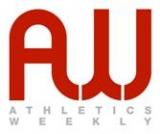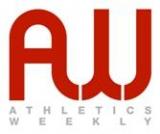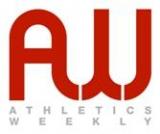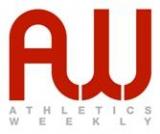Folders |
Athlete development: Euro U23s as an Olympic stepping stonePublished by
The value of the European Under-23 Championships in the development and maintenance of elite athletes is explored in research by Dr Brian HanleyThe European Under-23 Championships are an important development opportunity for high-level athletes and their coaches. A recent study, published in the IAAF’s scientific journal New Studies in Athletics, analysed thousands of athletes’ performances from those championships and shows the important role that they play in the development of individual athletes. For the study, the results for each of the individual events (not including relays) held at those championships from 1999 to 2013 were analysed. The total number of athletes analysed comprised 2900 men and 2448 women. France was the best represented nation, followed by Germany, Poland, Russia with Great Britain and Northern Ireland in fifth place (308 athletes). To measure the progress of these athletes, the results of the World Championships and Olympic Games from 1999 to 2013 were scrutinised for performances by those athletes identified as having competed at under-23 level. Details recorded for athletes included highest stage reached (heats, finals), medals won, and whether they had competed in more than one event or on more than one occasion. The results of the study showed that these championships are indeed a key component of athlete development in Europe, with approximately 40% of competitors from a given championships eventually reaching global level. Of the nations with the largest contingents, under-23 athletes from Russia, Great Britain and Germany went on to achieve large medal hauls at global level British under-23 men went on to win 13 medals at global level (including seven golds) and British women won 11 medals in total (five golds). Because transition times to competition could be quite long for some events such as distance running, many athletes who took part in the latter editions (in 2011 and 2013) should progress to World Championships and Olympic Games within the next few years. Coaches and others involved in high-performance positions should therefore note that even just qualifying for global championships can take time, and the under-23 championships are an invaluable opportunity for athletes to bridge the gap from youth and junior competition to senior level.
The European Under-23 championships are also very necessary for late developers, who may not have been good enough to compete in youth or junior championships, and need the experience of elite, championship-style competition. Of course, these under-23 championships are an elite competition in themselves, and the increasing number of entrants (along with the fact that all member federations have taken part at some time) shows that they are an attractive and important feature of the European athletics calendar. They can be many athletes’ first experience of an international tournament, and because of its format (heats, semi-finals), they can help prepare them for the Olympic or World Championship arenas. The value of the under-23 championships to elite athletes was shown not only by the considerable number of athletes who returned to compete a second time, but more significantly by those who participated having already taken part in global championships, including well-known athletics stars like Blanka Vlasic, Andreas Thorkildsen, Yelena Isinbayeva and Carolina Kl ft. They therefore go further than a development activity in that they function in the maintenance of elite athletes. The best events for athletes progressing from the European Under-23 Championships were those where European athletes are traditionally strong, such as race walking, jumps, throws, and combined events (and often their main rivals in global competition were older European compatriots). In general, the time taken to reach a global competition or reach its final was quite short in these events and athletes tended to qualify or reach the final more than once. By contrast, athletes tended not to fare so well in the sprints or distance running events, although there were of course exceptions to this, such as Mo Farah. It was particularly informative that so many long distance runners ended up competing in only the marathon at global level, and that the transition time was so long (reflecting the nature of the event). However, while it is disappointing that so few European athletes went on to the 5000m and 10,000m at global level, there is clearly still value in athletes taking part in the shorter distance races (and 20km walk) that are available at under-23 level even if they intend to specialise at the marathon or 50km walk. One of the noticeable aspects of this study was the high numbers of women competing in the relatively new events of pole vault and hammer, both of which first appeared in the World Championships in 1999, and the high success rate with regard to global medals won. Without the European Under-23 Championships, these female athletes might have struggled to gain top-level experience of these events given their newness to international competition and indeed it was in these events that most women had already gained global experience. The under-23 championships thus have a key role in becoming familiar with competition demands. RecommendationsAthletes should note that the European Under-23 Championships are a key development competition, as relevant for those who have already made global championships as for those who are still progressing from junior level, and a high-class competition where they might line up against current or future stars of athletics. Coaches and administrators should ensure that the European Under-23 championships are a recognised milestone on the development pathway for their elite athletes and a worthwhile investment in their athletic careers. This should span all events, including those not included on the programme such as the marathon and 50km race walk. They should also note that, for most athletes, the development path can take some time and perseverance is needed in all events. Even those athletes who make it to global competition quite quickly can take considerably more time to reach finals, especially in events where Europeans are not traditionally strong. Other under-23 competitions are currently present in Europe, such as within the European Cross Country Championships and European Cup Winter Throwing event, and like the track and field championships these competitions should similarly be viewed by athletes and coaches as excellent development opportunities. There is scope for facilitating under-23 classification within existing senior competition, such as the European Cup Race Walking event that could be considered as another potential development step for young athletes. Dr Brian Hanley is a senior lecturer in sport and exercise biomechanics at Leeds Beckett University and a level-2 endurance coach. If you would like more information about his study, please contact him at [email protected] The post Athlete development: Euro U23s as an Olympic stepping stone appeared first on Athletics Weekly. Read the full article at: www.athleticsweekly.com
|






